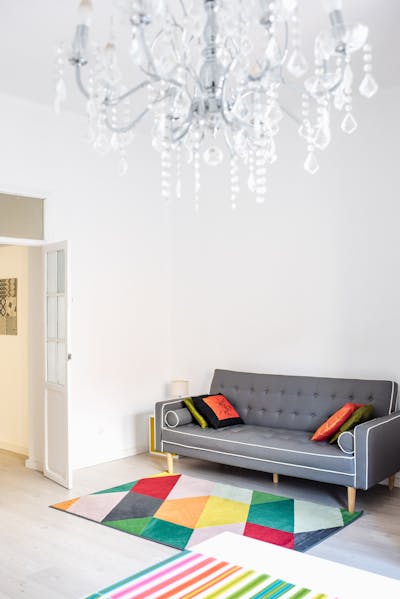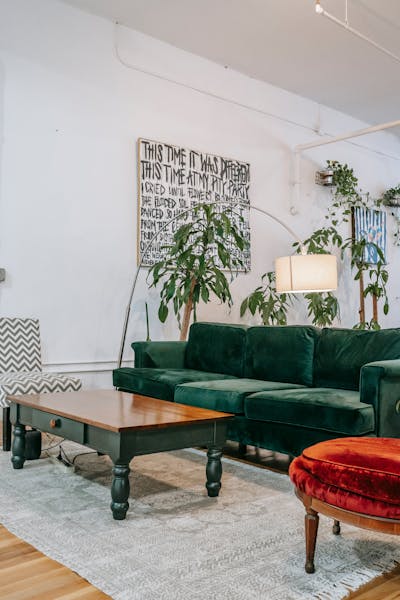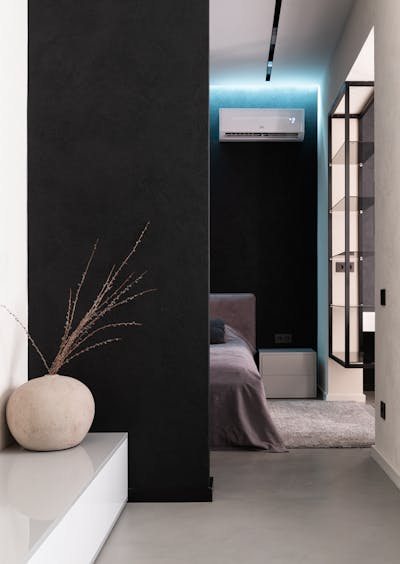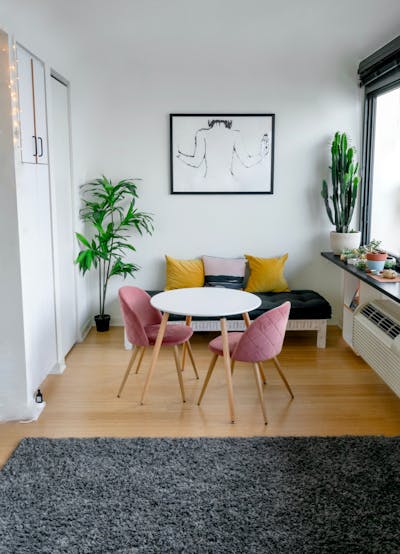Rugs are more than simple floor coverings; they are vital elements in interior design that can enhance room aesthetics significantly. The design of a rug can influence a room's overall ambiance, color scheme, and style. In this article, we'll explore the various ways rug design impacts room aesthetics, offering practical advice on selecting the right rug for your space.

The Role of Color in Rug Design
Color is one of the most significant aspects of rug design that affects the overall aesthetics of a room. Different colors evoke different emotions and can alter the perception of space:
1. Warm Colors
Rugs with warm colors like reds, oranges, and yellows can create an inviting and cozy atmosphere. These shades can energize a space and encourage social interaction.

2. Cool Colors
Conversely, cool colors such as blues and greens promote calmness and tranquility, making them ideal for spaces intended for relaxation, such as bedrooms and living rooms.
3. Neutral Colors
Neutral rugs can serve as versatile backgrounds that allow other decor elements to stand out. They can balance out bold furnishings and create a cohesive look.
Patterns and Textures
The pattern and texture of a rug can significantly affect the visual interest and depth of a room:
1. Geometric Patterns
Rugs featuring geometric patterns can add modernity and sophistication to a space. They can serve as statement pieces and create visual appeal without overwhelming the room.

2. Floral and Organic Patterns
For more traditional or bohemian styles, floral and organic patterns can add a touch of elegance and warmth, promoting a soft and inviting atmosphere.
3. Textured Rugs
Incorporating textured rugs can add dimension and depth to your decor. Whether it's a shag rug that invites a cozy feel or a flat-weave rug that emphasizes sleek simplicity, texture matters.

Defining Spaces with Rugs
Rugs can help define spaces within larger areas, making them essential in open floor plans:
1. Creating Zones
Using rugs to delineate different zones—such as dining areas, lounge areas, or workspaces—adds structure and organization to your home.
2. Enhancing Flow
A well-placed rug can guide the flow of movement through a room, leading the eye from one area to another and making the space feel more cohesive.

Complementing Existing Decor
Rugs should complement the existing decor and not clash with it:
1. Matching Styles
Consider the style of your furniture and decor when selecting a rug. A contemporary rug can elevate a modern space, while a vintage rug can add character to a traditional setting.
2. Coordinating Colors
When choosing a rug, make sure its colors coordinate with the other elements in the room. You want to create harmony in your design rather than visual discord.

Practicality of Rug Design
While aesthetics are essential, don’t forget about the practical aspects of rug design:
1. Durability
Selecting a durable material is crucial, especially in high-traffic areas. Investing in a well-made rug ensures that it will withstand daily wear and tear while maintaining its beauty.
2. Maintenance
Consider how easy it is to clean your rug. Some materials require more maintenance than others, so choose one that fits within your lifestyle and cleaning routine.
Conclusion
The design of a rug has a profound impact on room aesthetics, influencing color schemes, defining spaces, and complementing existing decor. Understanding how to utilize rugs effectively within your interior design can elevate your home's overall appeal. By choosing the right colors, patterns, textures, and practicality for your rugs, you can create a harmonious and inviting space that reflects your personal style.



